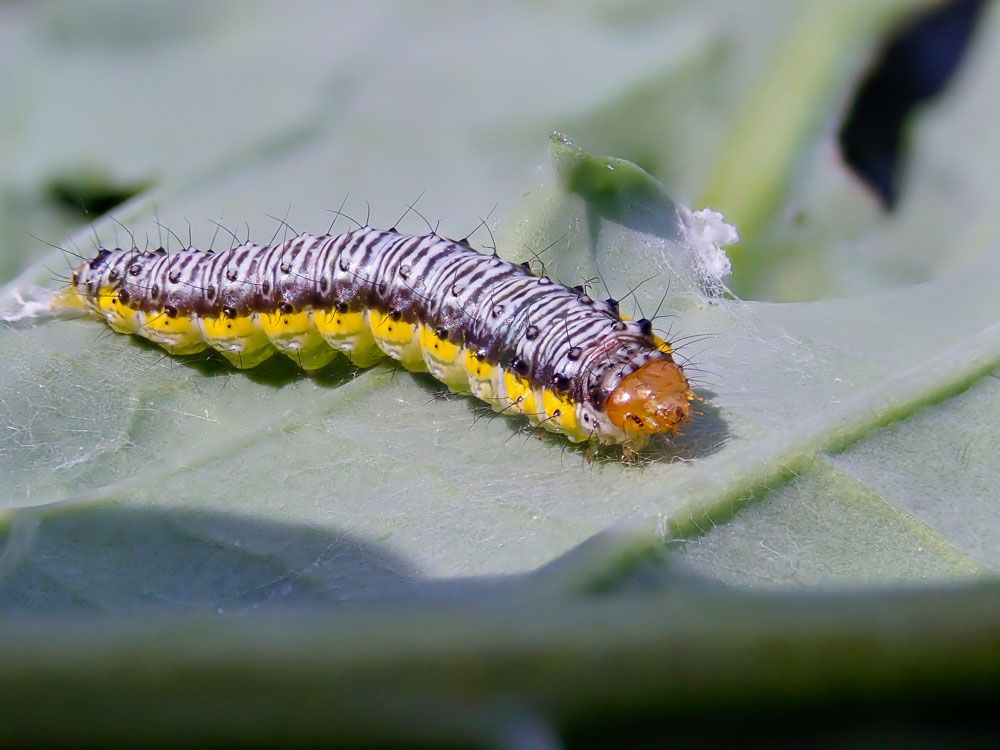
Cross-striped Cabbageworm – Evergestis rimosalis
Cross-striped Cabbageworm – Evergestisrimosalis
Common Name: Cross-striped Cabbageworm
Latin Name: Evergestisrimosalis
Appearance:
- The adult has a wingspan of around 25 mm, making it larger than the diamondback moth but smaller than the cabbage looper moth. Hindwings are pale with a black border, and forewings are straw-coloured with olive to purplish-brown markings and transverse lines.
- The eggs are 1.2 mm x 0.9 mm in size and are placed in tiny clusters (3-25) beneath leaves.
- Larvae grow via four instars. The final instar is 15-17 mm long and has a bluish-grey back with many transverse black stripes (thus the name “cross-striped”).
